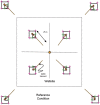Monitoring ecological recovery of reclaimed wellsites: Protocols for quantifying recovery on forested lands
- PMID: 31080754
- PMCID: PMC6500915
- DOI: 10.1016/j.mex.2019.03.031
Monitoring ecological recovery of reclaimed wellsites: Protocols for quantifying recovery on forested lands
Abstract
We developed a scientifically robust and financially sustainable monitoring protocol to enable a consistent assessment of ecological recovery of physical, chemical, and biological indicators at certified reclaimed industrial wellsites in forested lands in noutheastern Alberta. Using the developed protocols, data can be generated from measurement of soil, vegetation, and landscape indicators at reclaimed wellsites and adjacent reference sites. We selected the appropriate vegetation, soil, and habitat indicators for a long-term reclamation monitoring program and have provided sampling protocols for the selected indicators here. The protocols may be used to identify and prioritize indicators of reduced ecosystem health and to track ecological recovery of reclaimed sites over time. The development of these integrated monitoring protocols is a first step towards successful and consistent long-term monitoring to assess ecological recovery of certified wellsites in Alberta. These protocols can be applied to wellsites and other similar sized disturbances in other forested regions too.
Keywords: Boreal forest; Ecological recovery; Monitoring protocol; Reclaimed wellsites; Soil sampling; Vegetation sampling.
Figures

















References
-
- Environment and Sustainable Resource Development . Alberta Environment and Sustainable Resource Development; Edmonton, Alberta: 2013. 2010 Reclamation Criteria for Wellsites and Associated Facilities for Forested Lands (July 2013 Update)http://aep.alberta.ca/lands-forests/land-industrial/programs-and-service... 66 pp. Available at:
-
- Alberta Biodiversity Monitoring Institute (ABMI) Alberta Biodiversity Monitoring Institute; Alberta, Canada: 2014. Terrestrial Field Data Collection Protocols (abridged Version) 2014-03-21.http://www.abmi.ca/home/publications/1-50/46.html Report available at: abmi.ca [Cited September 15, 2018]. Available at:
-
- Alberta Biodiversity Monitoring Institute (ABMI) Alberta Biodiversity Monitoring Institute; Alberta, Canada: 2014. Ecological Recovery Monitoring of Certified Wellsites: Field Data Collection Protocols for Forested Lands. Version 2014-05-26.http://ftp.public.abmi.ca//home/publications/documents/354_ABMI_2014-05-... 91 pp. Available at:
-
- Alberta Biodiversity Monitoring Institute (ABMI) 2018. Terrestrial Field Data Collection Protocols (Abridged Version). Version 2018-05-07.https://abmi.ca/home/publications/501-550/509 Available at:
-
- Energy Resources Conservation Board . Alberta Energy Regulator; Calgary, Alberta: 2012. Directive 001: Requirements for Site-Specific Liability Assessments in Support of the ERCB’s Liability Management Programs.http://www.aer.ca/documents/directives/Directive001.pdf Directive 001. pp. 32. Available at:
LinkOut - more resources
Full Text Sources

